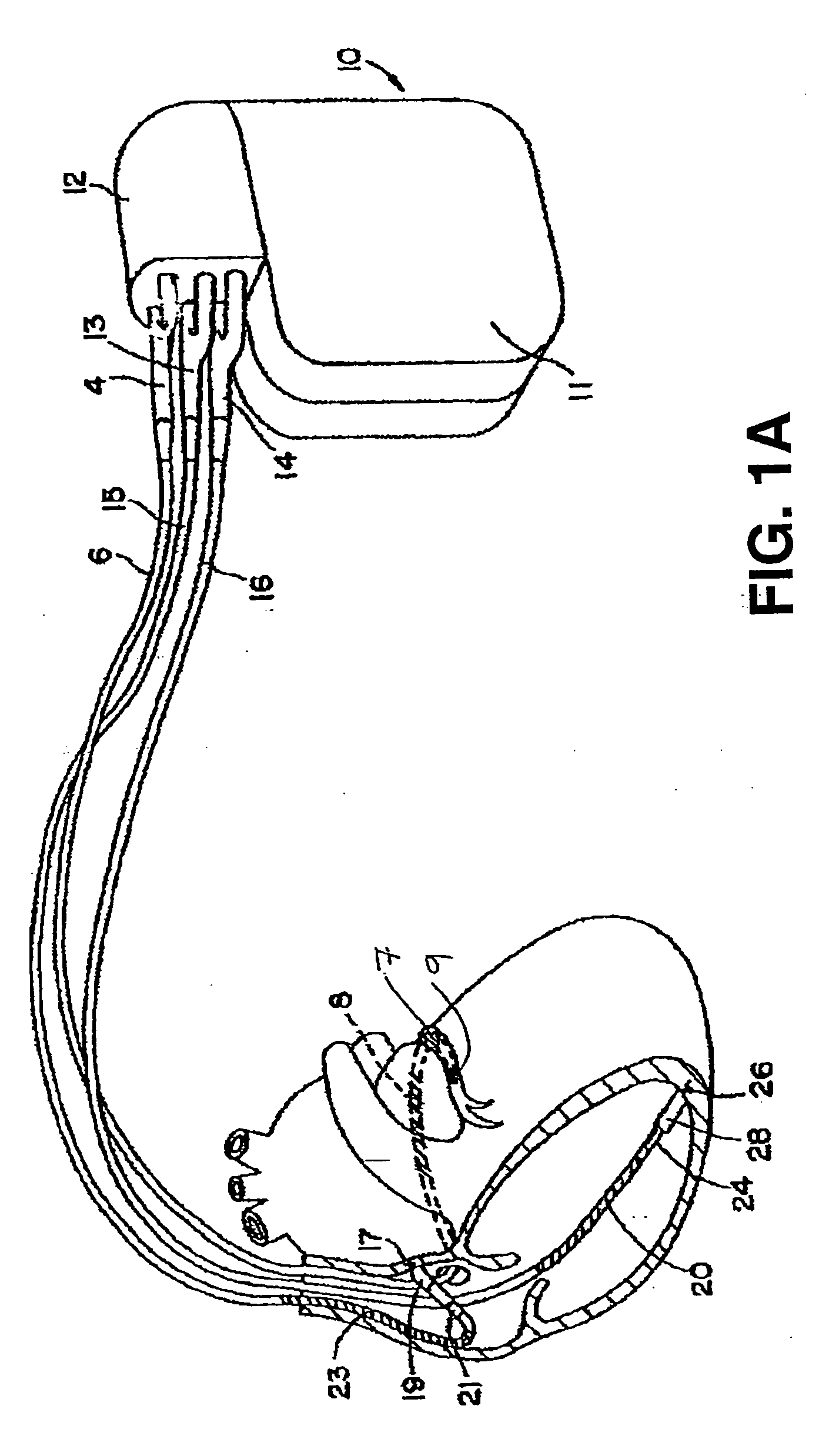Secure and efficacious therapy delivery for an extra-systolic stimulation pacing engine
a technology of pacing engine and extrasystolic stimulation, which is applied in the direction of therapy, heart stimulators, heart defibrillators, etc., can solve the problems of limited amount of calcium released in response to extrasystole, insufficient to cause normal mechanical contraction of the heart, and insufficient stimulation of myocytes, so as to achieve effective augmented stroke volume and cardiac output.
- Summary
- Abstract
- Description
- Claims
- Application Information
AI Technical Summary
Benefits of technology
Problems solved by technology
Method used
Image
Examples
Embodiment Construction
[0029] The present invention is generally directed toward providing an implantable system for delivering an electrical stimulation therapy to achieve augmented stroke volume (and, under certain conditions, cardiac output) by providing a carefully timed pacing stimulus to a chamber of a heart following an intrinsic or evoked depolarization. Herein the therapy is referred to herein as extra-systolic stimulation (ESS).
[0030] The timing of ESS therapy results in the device giving the patient a pacing stimulus relatively close to what has historically been called the “vulnerable zone.” The general consensus is that during the first few milliseconds after the refractory period—and depending to a degree on the magnitude of the ESS pulse delivered—the heart may have an increased vulnerability to a tachyarrhythmia and the risk of inducing a VT or VF with a pacing stimulus may be increased during this time.
[0031] The fact that ESS therapy pulses can be delivered at typical pacing amplitudes...
PUM
 Login to View More
Login to View More Abstract
Description
Claims
Application Information
 Login to View More
Login to View More - R&D
- Intellectual Property
- Life Sciences
- Materials
- Tech Scout
- Unparalleled Data Quality
- Higher Quality Content
- 60% Fewer Hallucinations
Browse by: Latest US Patents, China's latest patents, Technical Efficacy Thesaurus, Application Domain, Technology Topic, Popular Technical Reports.
© 2025 PatSnap. All rights reserved.Legal|Privacy policy|Modern Slavery Act Transparency Statement|Sitemap|About US| Contact US: help@patsnap.com



